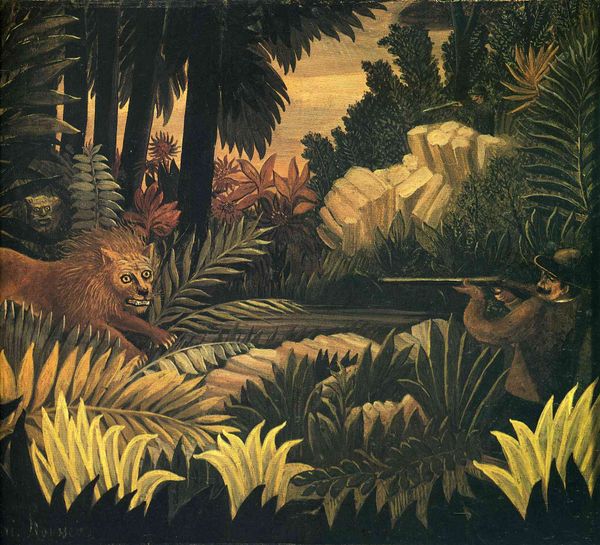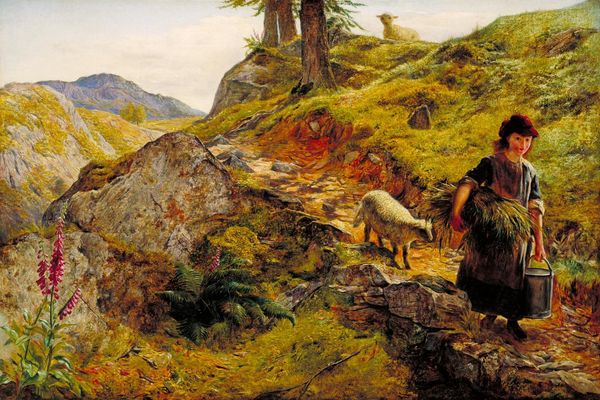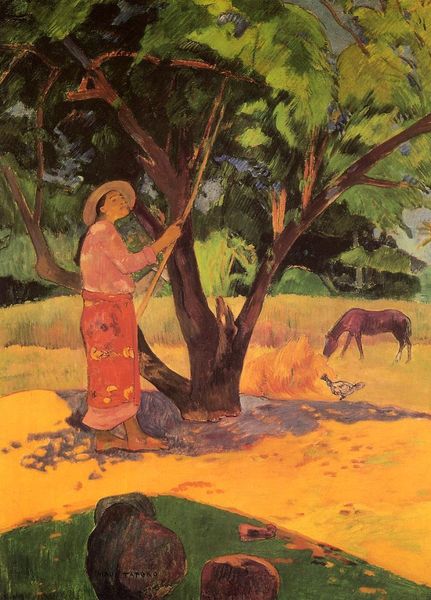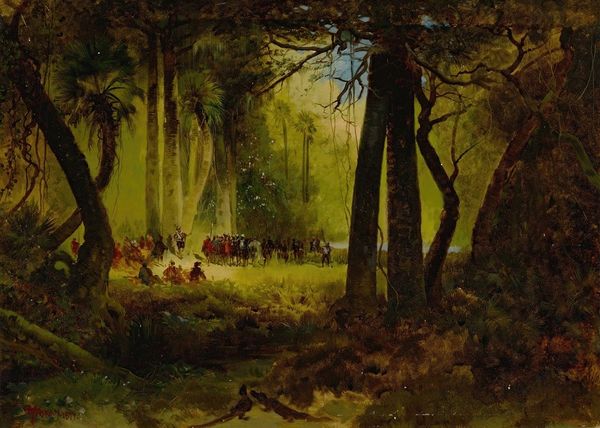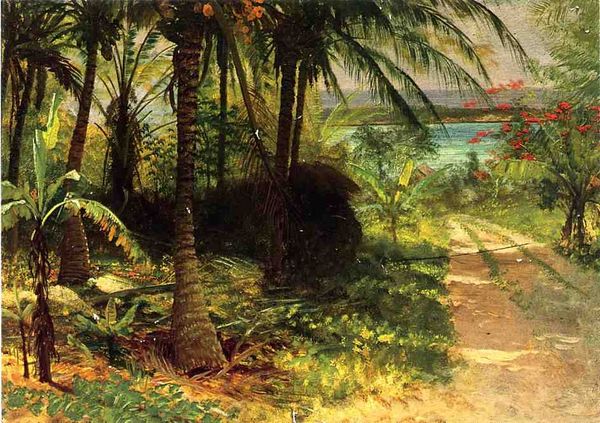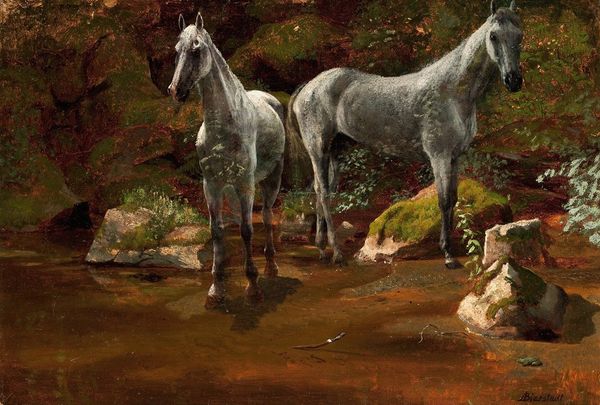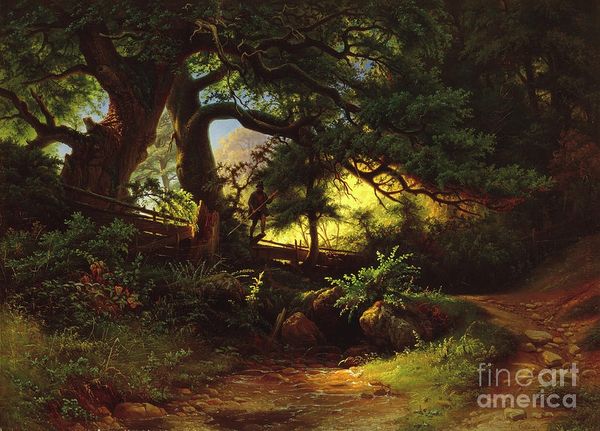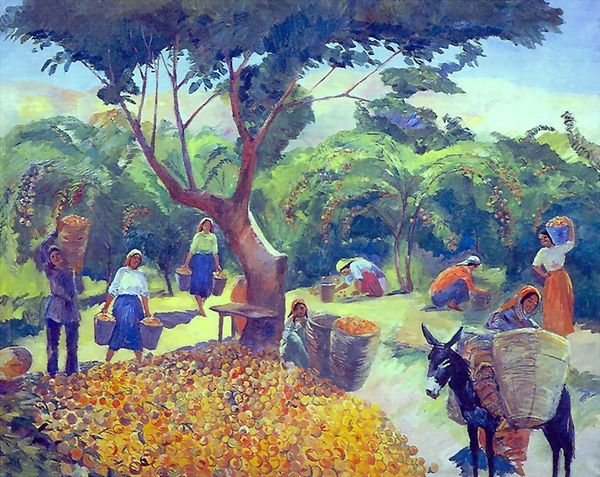
painting, plein-air, oil-paint
#
tree
#
animal
#
painting
#
plein-air
#
oil-paint
#
landscape
#
figuration
#
folk-art
#
orientalism
#
genre-painting
#
history-painting
#
academic-art
#
realism
Copyright: Public domain
Editor: We’re looking at “La Récolte Des Dattes,” or "The Date Harvest," painted by Eugène Girardet around 1890. It's an oil on canvas, and what strikes me is this idealized scene of labor, bathed in warm light. What's your interpretation? Curator: Well, on the surface, we see an ethnographic depiction. But we have to consider the painting's moment in history. Girardet was part of the Orientalist movement, which means his work was shaped by European ideas and projections of the "East." Do you notice anything in the painting that might reflect that? Editor: I guess… everyone seems so calm and peaceful, even the donkey. Is that an accurate portrayal of harvesting dates? Curator: Perhaps not. It presents a romanticized version of Algerian life, omitting potential hardships of labor under colonial rule. Consider how this image might have been consumed by a European audience, reinforcing particular views of Algerian culture. Who is this painting really for? Editor: So, it's less about an actual depiction of harvesting dates, and more about a fantasy of what Algeria was like at the time? A colonial fantasy? Curator: Exactly. Think about how genre painting, combined with the Orientalist aesthetic, often served to solidify Europe’s perceived dominance and romanticize its colonies. Even details like the bright colors and meticulous realism play a role. Do they attract or distance the viewer? Editor: They're definitely attractive. They make the scene very appealing. I never considered that what seems like just a landscape painting could actually carry a political message. Curator: And that's why understanding the socio-political context is essential when viewing art from this period. Hopefully next time you visit a gallery you consider who are we seeing, who made it and who paid for it. Editor: That’s a good point, It's been illuminating to view this painting through the lens of history and power dynamics. Thank you.
Comments
No comments
Be the first to comment and join the conversation on the ultimate creative platform.
